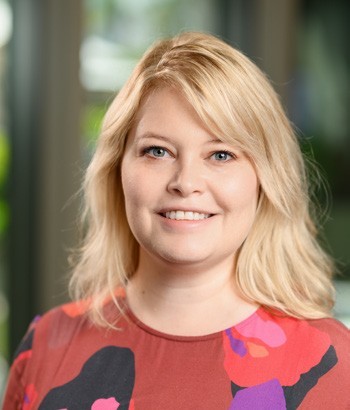minews
Award-Winning Paper Explores Atropine Response
Myopes considering atropine eye drops should be screened to ensure they have adequate negative fusional reserves and exophoria to compensate for any atropine-induced change in binocular vision during treatment, a Brisbane optometrist has suggested.
Queensland University of Technology (QUT) lecturer in optometry and vision science and QUT Myopia Control Clinic co-ordinator, Dr Emily Woodman-Pieterse, was commenting on a small study she presented at the recent 2023 American Academy of Optometry annual meeting in New Orleans.
Her paper, ‘Response of accommodation and vergence systems to low-dose atropine in young adult myopes’, received the International Myopia Institute’s Early Career Surprise Best Paper award for the best myopia paper at the meeting.
Her 10-day randomised controlled trial allocated 0.05% atropine to half the participants while the rest used saline eye drops every night.
Participants weren’t habitually using atropine or any myopia control. Binocular vision parameters were measured at baseline, day three, and day 10.
Those who received atropine had a significant reduction in their ability to accommodate, which continued to worsen between days three and 10, measured by a significant reduction in accommodative amplitude, positive negative accommodation, accommodative facility, and significant increase in accommodative lag.
DIRECT CLINICAL RELEVANCE
“This led to changes in the atropine group’s vergence characteristics at near, with an increasingly more esophoric near heterophoria and reduced negative fusional reserves between days three, and 10.
“This has direct clinical relevance for clinicians who are looking for evidence-based guidance on how to choose suitable patients for myopia control using atropine,” Dr Woodman-Pieterse told mivision.
“It shows that 0.05% atropine significantly disrupts the ability to accommodate, which then impacts the vergence system at near through an increased esophoria and reduced negative fusional reserves.”
FUSIONAL RESERVES AND EXOPHORIA
“These findings indicate that potential atropine candidates should be screened to ensure they have adequate negative fusional reserves and exophoria to compensate for any atropine-induced change in binocular vision during treatment.”
She said other research had looked at how low dose atropine affected amplitude of accommodation and had not reported significant change, but this looked at many different aspects of binocular vision, and also showed how the effect of atropine appeared to increase over time. Previous studies had often only looked at one time point (e.g. a day after using drops).

Dr Rohan Hughes

Dr Emily Woodman-Pieterse
Supervising optometrist in the QUT Myopia Control Clinic Dr Rohan Hughes also presented preliminary findings from his research at the meeting, exploring the effect of low dose atropine eye drops on accommodation-induced ocular biometry changes in children with myopia.
“There is a lot we still need to clarify with respect to atropine, for example, optimal doses, treatment protocols, and other effects within the eye,” he said. “We have previously shown in our research that accommodation can cause changes in the eye’s biometry, including small increases in axial length.
“Since atropine can affect accommodation, my current research is focussed on exploring the effect of atropine on these structural changes during accommodation in myopic children, which will contribute to a better understanding of the effect of atropine.”
RETROSPECTIVE REVIEW OF MYOPIA CONTROL
Additionally, Dr Woodman-Pieterse and Dr Hughes are undertaking a retrospective analysis of myopia control treatments in the QUT Myopia Control Clinic’s 500-plus patient population.
“There have been many clinical trials for myopia control treatments, but we are lacking evaluations of real-world clinical outcomes, where patients and clinicians are making active clinical decisions,” Dr Hughes said.
“So, we’re following these patients in our clinic and intend to examine if the treatments are as effective as they are in clinical trials, and whether there are factors involved that may allow us to optimise or individualise treatment protocols more effectively.”
SIX AUSTRALIANS BECOME ACADEMY FELLOWS
Drs Woodman-Pieterse and Hughes were among six optometrists from Australia who became Fellows of the American Academy of Optometry at the meeting in New Orleans.
Deakin University optometry lecturer and radiation therapist Dr Amanda Edgar, University of New South Wales (UNSW) Centre for Eye Health senior staff optometrist Janelle Tong, and UNSW School of Optometry and Vision Science postdoctoral research fellows Dr Sheela Kumaran, Dr Parthasarathi Kalaiselvan, and PhD candidate Rehana Khan Tajuddin Mohamed Akthar Khan also became Fellows.